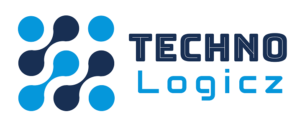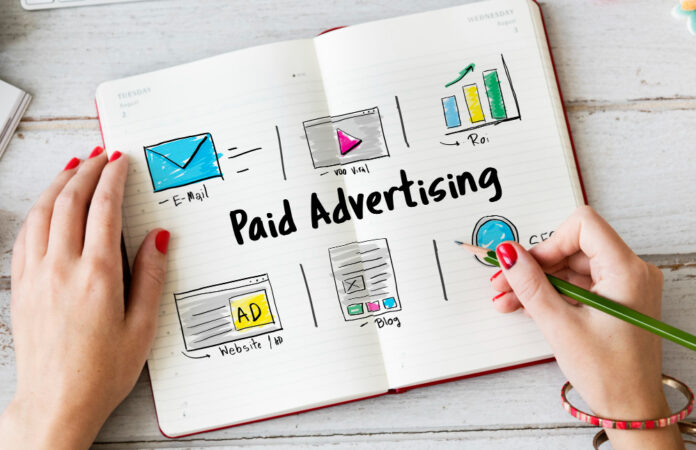In the modern healthcare landscape, where patients are increasingly turning to the internet to research symptoms, treatment options, and healthcare providers, the importance of a robust online presence cannot be overstated. One of the most effective ways to increase visibility and attract potential patients is through paid media for healthcare. Paid media strategies in healthcare marketing have emerged as a powerful tool, allowing healthcare providers to target the right audience, build trust, and drive conversions.
This article delves into the nuances of effective paid media strategies for healthcare, outlining actionable steps to enhance visibility and build patient trust.
The Growing Importance of Paid Media in Healthcare
The digital age has fundamentally changed the way people seek healthcare information. Patients are no longer solely relying on traditional sources of information, such as word-of-mouth referrals or in-person consultations. Instead, the internet serves as a primary resource for everything from finding healthcare professionals to exploring medical conditions and treatments.
Healthcare organizations are keenly aware of this shift. With increasing competition and the growing reliance on online search behavior, healthcare providers must adapt and leverage paid media platforms to ensure their services are seen by the right people at the right time. Paid media for healthcare offers a targeted and measurable way to reach prospective patients, driving not only visibility but also fostering trust in the brand.
Understanding Paid Media in Healthcare Marketing
Paid media refers to the practice of paying to display advertisements on various platforms. These advertisements can appear on social media sites, search engines, and even healthcare-specific digital outlets. It involves several formats, such as pay-per-click (PPC) ads, display ads, sponsored posts, and paid social media campaigns.
The primary goal of paid media in healthcare is to drive awareness, capture leads, and ultimately increase patient visits and conversions. Paid media is particularly beneficial because it allows healthcare organizations to reach highly targeted audiences, ensuring that the right people see the right message at the right time. Whether it’s a Google search ad showing up when someone types in a medical question or a Facebook ad targeting individuals with specific health concerns, paid media can be finely tuned to reach prospective patients based on their needs.
The Key Benefits of Paid Media for Healthcare
- Increased Visibility
Paid media campaigns can place your healthcare practice or hospital in front of potential patients who may not be aware of your services. With precise targeting options available, paid media allows healthcare providers to ensure that their message reaches individuals who are actively searching for the services they offer. - Targeted Advertising
Paid media platforms offer advanced targeting tools that enable healthcare providers to focus their efforts on specific demographics, behaviors, interests, and even geographic locations. For instance, a healthcare provider specializing in pediatric care can target parents within a specific radius, while a cosmetic surgeon can target individuals who have shown an interest in cosmetic procedures. - Cost Control and Measurability
Unlike traditional advertising, paid media allows healthcare organizations to control their budget and adjust spending based on performance. With platforms like Google Ads or Facebook Ads, healthcare organizations can set daily or lifetime budgets and only pay when someone engages with their ad. In addition, these platforms provide comprehensive metrics and analytics that allow healthcare organizations to measure the effectiveness of their campaigns in real time. - Building Trust
One of the most important aspects of healthcare marketing is trust. Patients want to feel confident in their healthcare providers and prefer those who have a strong reputation. Paid media strategies that highlight patient testimonials, showcase positive reviews, or promote expert content can significantly contribute to building trust with prospective patients.
Effective Paid Media Strategies for Healthcare
While paid media for healthcare can deliver substantial results, not all campaigns are created equal. To ensure success, healthcare providers need to implement strategies that are specifically tailored to their audience and goals. By leveraging targeted paid media efforts, healthcare organizations can drive more engagement and achieve better outcomes. Below are some effective strategies that healthcare organizations can use to maximize the impact of their paid media for healthcare initiatives.
1. Invest in Google Ads (Pay-Per-Click)
Google Ads (formerly known as Google AdWords) is one of the most powerful and widely used paid media platforms for healthcare marketing. It allows healthcare providers to run text-based ads that appear at the top of search engine results pages (SERPs) when users search for relevant keywords.
When implementing Google Ads, it’s important to focus on keyword selection. By choosing keywords that potential patients are likely to search for, healthcare providers can ensure that their ads are shown to an audience actively seeking their services. For example, a dental practice might target keywords like “best dentist in [city]” or “affordable teeth whitening services.”
Healthcare organizations should also ensure that their landing pages are optimized for conversions. A well-designed landing page that clearly communicates the value proposition and includes a strong call-to-action (CTA) can significantly increase the chances of turning clicks into appointments.
2. Leverage Facebook and Instagram Ads for Patient Engagement
Social media platforms like Facebook and Instagram are powerful tools for building brand awareness and engaging with potential patients. These platforms allow healthcare providers to run highly targeted ad campaigns based on demographics, behaviors, and interests.
Healthcare organizations can use Facebook and Instagram ads to share educational content, promote special offers, and engage with their audience. For example, a physical therapy clinic could run a campaign showcasing success stories of patients who have recovered from injuries, using video testimonials to build trust and demonstrate their expertise.
Since social media is a highly interactive platform, healthcare providers can also leverage comments, direct messages, and polls to engage with their audience and build stronger relationships. This two-way communication fosters a sense of community and trust, making potential patients more likely to consider the provider for their care.
3. Run Targeted Display Ads to Increase Brand Awareness
Display ads are visual advertisements that appear on websites across the internet. These ads can be in the form of banners, sidebars, or even video ads. Display ads are an excellent way to build brand awareness by reaching users who may not be actively searching for healthcare services but could be interested in your offerings based on their browsing habits.
Healthcare providers can use display ads to target specific audiences based on their interests, online behaviors, and geographic location. For instance, a fertility clinic could target women who have recently shown interest in family planning or pregnancy-related content.
When designing display ads, it’s crucial to ensure that the visuals are attention-grabbing and that the messaging is clear and concise. Including patient testimonials or a unique selling point (USP) can help differentiate your services from competitors.
4. Retargeting Campaigns for Increased Conversions
Retargeting is a strategy that involves displaying ads to people who have previously visited your website or interacted with your content but did not complete a desired action, such as booking an appointment or filling out a contact form.
Retargeting is incredibly effective in healthcare marketing because it allows you to stay top of mind with potential patients who have already shown interest in your services. By displaying relevant ads to these individuals, healthcare providers can increase the chances of converting them into patients. For example, a cosmetic surgery clinic might retarget users who visited their site to learn more about breast augmentation but didn’t schedule a consultation.
5. Promote Reviews and Testimonials through Paid Media
In healthcare, reviews and patient testimonials play a pivotal role in building trust and credibility. According to various studies, a significant number of patients trust online reviews as much as personal recommendations. Healthcare providers can leverage paid media to promote positive reviews and testimonials, showcasing their commitment to patient care.
For instance, Google Ads can be used to promote a healthcare provider’s stellar reviews by including snippets from satisfied patients in the ad copy. On social media, healthcare organizations can run campaigns that highlight patient success stories or video testimonials to establish trust and encourage new patients to choose their services.
6. Utilize Video Marketing to Explain Services and Educate Patients
Video is a highly engaging format that can help healthcare providers explain their services, answer common questions, and build trust with potential patients. Platforms like YouTube, Facebook, and Instagram are excellent channels for video marketing.
A healthcare provider might use video ads to introduce their team, explain common procedures, or address frequently asked questions. These videos can be highly informative, helping patients feel more comfortable and confident about choosing your healthcare practice for their needs.
Conclusion: Paid Media for Healthcare as a Key Driver of Growth
In today’s competitive healthcare landscape, paid media for healthcare is an essential component of a well-rounded marketing strategy. By effectively using paid media platforms, healthcare providers can increase visibility, drive patient trust, and boost conversions. Implementing strategies like Google Ads, social media campaigns, display ads, retargeting, and video marketing can help healthcare organizations reach a highly targeted audience and establish themselves as trusted leaders in their field.
Paid media is not just about attracting more clicks; it’s about building meaningful relationships with potential patients. Through clear messaging, targeted campaigns, and compelling calls-to-action, healthcare providers can use paid media to drive real, measurable results—ultimately leading to greater patient satisfaction and long-term success.

